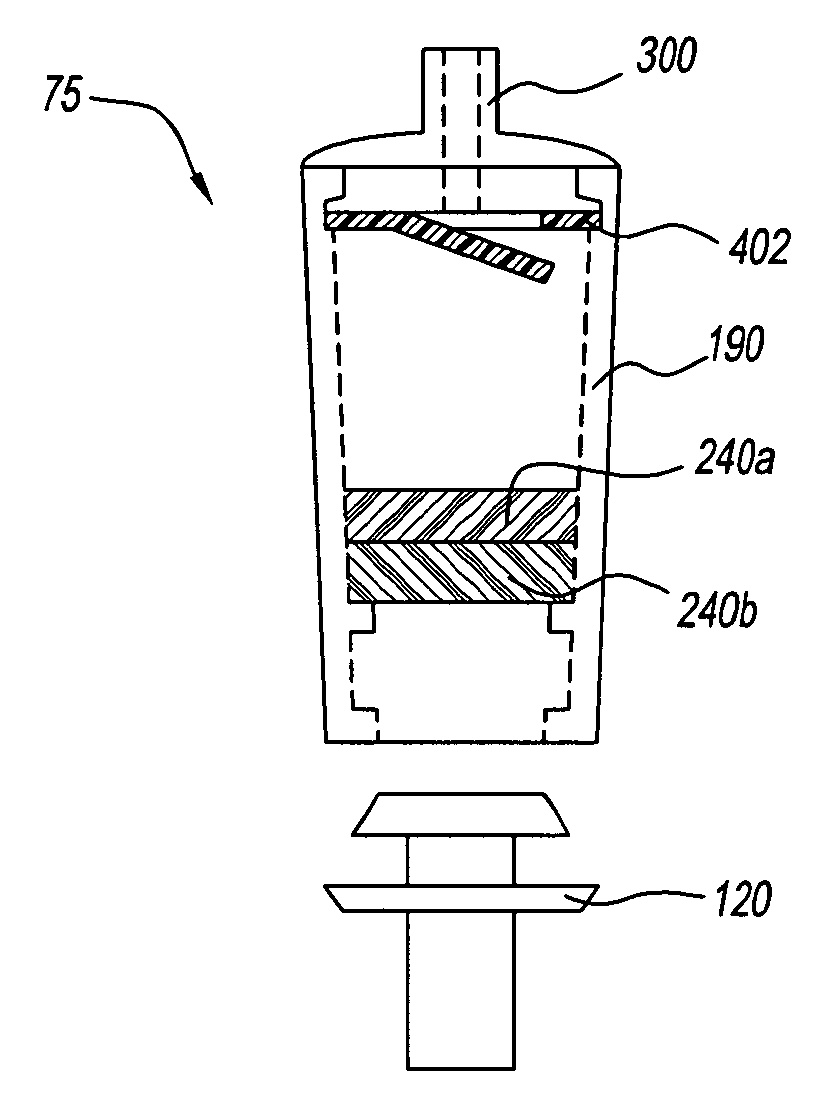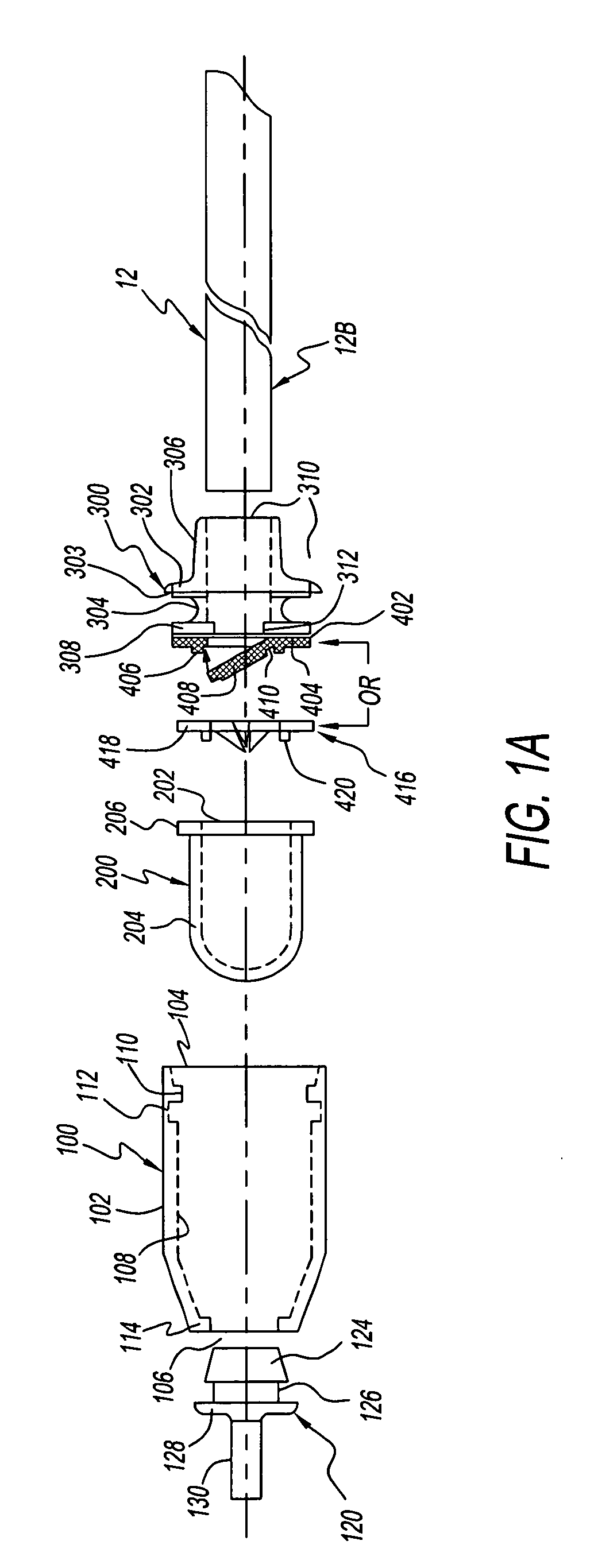When such fluids and gases are withdrawn from the patient's mouth (as by a vacuum powered
saliva ejector or a high-volume
aspirator / evacuator (HVE)), this
solid matter can cause difficulties for the dentist and for the patient especially when the patient is anesthetized.
Additionally, the
solid matter can clog the vacuum / suction
system and water waste line so as to cause it to malfunction.
Another such difficulty is that the solid, liquid and gaseous matters can be incorporated in an
aerosol created during a
dental procedure and the build up of the solid matter can occur on the inner surfaces of the vacuum / suction and dental unit lines and suction and water waste lines, thereby forming an area for the growth of bio-film that in turn promotes the growth of
bacteria.
However, such trap cannot effectively filter small amalgams and other solid, liquid or gaseous particles and unnecessarily
expose dental professional and patients to amalgam (and its
mercury vapors and methyl mercury) in the operatory.
Existing amalgam separators typically require professional installation and are costly to install and maintain.
If the U.S. is to ban its use, it is estimated to cost the public's dental expenses of $8.2 billion during the first year.
Laws are being enacted mandating the use of amalgam separators based upon faulty science and such laws are a burden to those dentists who perform procedures involving amalgam as well as being misleading to environmentalists, the EPA and waste water and
sludge treatment plants.
Other investigators have noted that
clinical evaluation of existing amalgam separators would be difficult to perform and an article by the American Dental Association (ADA) dated Aug. 5, 2005, entitled “Summary of Recent Study of Dental Amalgam in Waste Water” states that “measuring the exact amount of amalgam waste being generated and discharged from a dental office is a very difficult task.
The
discharge of amalgam waste into
sewerage systems is complicated by the fact that this waste is generated on an intermittent basis with huge day-to-day and even minute-to-minute variations.
Methods such as sampling from drain or sewer lines, or even collecting total waste over several days show huge variations that are difficult to extrapolate into total waste generated over a year.
In such a situation the use of disinfectants such as
sodium hypochlorite will change the accumulated amalgam particles into methyl mercury which is considered toxic and the most hazardous form of amalgam waste.
Further, it is important to note that when the vacuum valves,
air compressor for tools and water lines are shut off after a procedure for a patient,
microbial contamination of the dental unit and water lines can occur due to the “suck back” phenomenon, which may be partially embedded in an existing
biofilm.
This “suck back” phenomenon increases the likelihood of dental acquired infections.
All existing amalgam separators must be clinically considered to be inadequate in meeting the ISO Standard 11143 as they are not removing 95% of the amalgam particles generated.
Another problem exists with prior art amalgam separators in that it is necessary to maintain a pH in the range of 5 to 10 within the dental units and pipelines of the suction
system.
A pH below or above the 5 to 10 range may adversely affect the amalgam particles attached to the
biofilm or amalgam particles resulting from a procedure involving amalgam so as to possibly cause the release of
mercury vapors or result in the production of methyl mercury that is toxic and considered the most hazardous particle form from amalgam.
First, existing strainer / filter units within the dental unit and suction lines of
saliva ejectors and HVE aspirators are difficult, if not impossible, to sterilize.
The
Food and Drug Administration (FDA) regulations in the United States do not require the strainer / filter units to be sterile as well as the saliva ejectors and aspirators and they need only be cleaned, which in itself is labor intensive and not cost effective.
Even if a particular dentist is motivated to sterilize a strainer / filter unit and
aspirator before connecting them to the dental unit and vacuum systems, existing strainer / filter units and aspirators can neither be easily emptied nor cleaned and sterilized.
Hence, the strainer / filter unit and
aspirator / HVE or saliva ejector holders used during a
dental procedure on a patient may be unsterile at the beginning of the procedure.
This poses a danger that substances and debris from
dental procedures performed earlier in the day may cross-contaminate (as by back flowing solid or fluid as well as airborne substances into the patients' mouth or due to the suck-back phenomenon) who is undergoing a
dental procedure later on that day.
Therefore, if a dentist is motivated to use a sterile strainer / filter unit for each patient, the dentist must make a considerable investment in strainer / filter units and must incur increased operating expenses to clean and sterilize them.
Secondly, existing strainer / filter units are not versatile (the saliva ejector shown in U.S. Pat. No. 3,890,712 by Lopez is an example of such a non-versatile device).
Prior art strainer / filter units are designed to work only with a particular type of saliva ejector or aspirator and cannot easily be used with other types of similar devices.
Thirdly, existing sterile strainer / filter units are relatively expensive.
Fourthly, the cost and time associated with emptying and replacing dental unit traps can be high.
Lastly, existing strainer / filter units do not properly filter all amalgam particles (whether in solid, liquid or vapor form) and keep the amalgam from regurgitating.
Some amalgam particles in solid, liquid or vapor form never reach the conventional amalgam separators.
Additionally, this prior art device does not prevent regurgitation or back flow of the amalgam as well as other solids, fluids and airborne gaseous substances collected in the strainer / filter unit.
 Login to View More
Login to View More 


